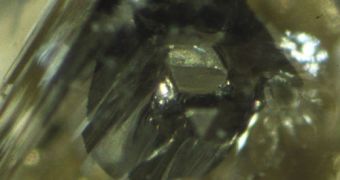Though jewelers can't stand them, impurities that develop in diamonds when the precious stones are formed are a treasure trove for science, because they hold clues as to how the Earth looked like hundreds of millions of years ago.
If ancient minerals are trapped within diamond, then they will survive unaltered for prolonged periods of time. Scientists are convinced that the impurities they are seeing today have the exact same properties they did when they were first trapped in the carbon compound.
In a recent study, for example, experts were able to use data collected from inside diamonds in order to refine our current understanding of how tectonic plates were being recycled on the planet about 3 billion years ago.
At that time, continents broke apart and began to drift, colliding with each other, and leading to the formation of mountains, volcanoes and other tectonic features. Information that researchers collected from about 4,000 mineral inclusions proved to be invaluable for the effort.
One of the most important accomplishments of the investigation was pinpointing when the Wilson cycle began. This term defines the processes that accompany the growth of our planet's continental crust. The event was accompanied by numerous side-effects.
These included the opening or closing of ocean and sea basins, the creation or destruction of mountain chains, the distribution of ores and other resources through the Earth's crust, the shaping of continents and many others. Details of the research appear in the latest issue of the top journal Science.
“But when it all began has remained elusive until now. We used the impurities, or inclusions, contained in diamonds, because they are perfect time capsules from great depth beneath the continents,” explains Carnegie Institution Department of Terrestrial Magnetism expert Steven Shirey.
“They provide age and chemical information for a span of more than 3.5 billion years that includes the evolution of the atmosphere, the growth of the continental crust, and the beginning of plate tectonics,” adds the expert, who was the lead author of the study.
It's “astonishing that we can use the smallest mineral grains that can be analyzed to reveal the origin of some of Earth's largest geological features,” adds University of Cape Town expert Stephen Richardson, a coauthor of the investigation.
The study was funded by the Division of Earth Sciences at the US National Science Foundation (NSF). Program director Jennifer Wade says that the diamond inclusions proved to be an absolute goldmine when it came to understanding the Wilson cycle.
“The tiny inclusions found inside diamonds studied by this team have recorded the chemistry and evolution of the Earth over 3.5 billion years. They help pinpoint when the cycle of plate tectonics first began on Earth,” she explains.

 14 DAY TRIAL //
14 DAY TRIAL //